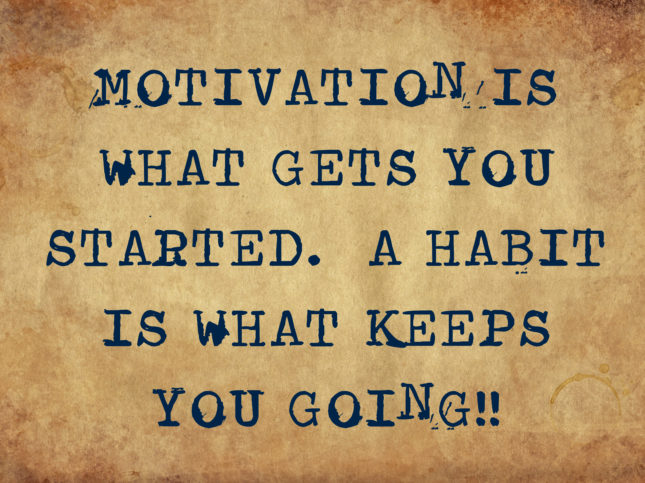Use the Army’s Secret Weapon to Improve Your Sales Force
Which would you rather have working for you, a salesperson with 10 years of experience, or one with one year of experience ten times? The unfortunate fact is that the majority of sales professionals fall into the second category.
The world’s foremost expert on experts is K. Anders Ericsson (who discovered the 10,000 hour rule that Malcolm Gladwell made famous). He tells us that:
“Some professionals continue to improve steadily during many years and even decades, and are eventually recognized by their peers as having attained the highest levels as experts or masters. In contrast, most professionals in a domain reach a stable, average, undistinguished level of achievement within a relatively short time frame and maintain this mediocre level for the rest of their careers.”[1]
Like any complex problem, there are many causes for this unfortunate situation. The one I address in this article is the lack of feedback that most sales professionals receive, especially after sales calls. Sure, salespeople have an advantage over other professions in that they usually receive reasonably timely feedback on the results of their efforts. (Unlike, for example, college professors, who may never know how well their students learned or applied their teachings) but the problem is that even if you know something worked or did not work, you don’t always know why. If you closed a big deal, was it because of your skill, or did the competitor mess something up, or was your better, etc?
Feedback is the fuel of growth, but in the press of all our daily tasks it’s easy to overlook it; it’s also tempting to avoid it when we know it may not show us in our best light; or to notice it and quickly forget it.
Let’s switch the subject for just a minute. In the late seventies, the US Army was an institution in crisis, its confidence and effectiveness severely eroded by the Vietnam experience and the accompanying social turmoil. But with a vastly larger Warsaw Pact force staring them down in Europe they did not have the luxury of feeling sorry for themselves. They had to figure out quickly how to use quality to beat quantity. Some of that qualitative edge came from our superior technology, but all that expensive hardware is useless without educated, intelligent and adaptable people to employ it.
That’s where the National Training Center came in. In 1981, the Army created a special training force that acted as the enemy in training maneuvers in the desert at Ft. Irwin, CA, and which very quickly became so good that it regularly defeated larger forces who came in for realistic training against them.
Defeat is not pleasant, but it can be good for you if a) it’s not fatal and b) you learn from it. And that’s what the army did. They learned from it using a simple tool called the After Action Review.[2]
The AAR is a formalized method for a team to review its own performance immediately after the actual event. It relies on open feedback, and one way they ensured this was to make it safe for the lowest person to criticize even the highest ranking officer. The AAR asked such questions as what did we intend to happen? What actually happened? What produced the results? What do we sustain or improve for next time?
General guidelines for conducting an After Action Review:
- Do it as soon as possible after the sales call or relevant event.
- Don’t place blame. Discussion should focus on the what and why and not the who.
- Encourage open discussion; ask open-ended questions.
- The manager should not dominate the discussion; it’s best that they speak last.
- Leave your rank at the door.
Questions to ask (note that the questions in italics are general AAR questions and the ones below are specific to sales calls):
What were our intended results? What actually happened?
- Did we accomplish the call purpose? Could we have accomplished more?
- What effect did that have on our sales opportunity or customer plan?
- How many call actions did we achieve?
- Were our call actions sufficient to accomplish the purpose?
- What new information did we glean about the need, solution fit, and decision process?
What caused our results?
- Did our call purpose and actions suit the people actually present at the call?
- How did the customer respond to our questions?
- Were we prepared for all the customer’s questions and objections?
- Were we missing any support materials, and if so, is this something we should have anticipated?
- How smooth were the handoffs between participating sales team members?
What will we keep and what will we improve?
- What, if anything, do we need to do to be better prepared for the next meeting with this customer, or any other customer?
- What lessons did we learn that are situation-specific and which are general that should be shared with a wider audience?
It’s important to note from the specific questions above that an AAR is most effective when it is part of an ongoing feedback and learning loop. In other words, you can see that the plan before the event is a key tool . In essence, your sales call plan is a hypothesis about what is the best way to accomplish your sales goal, and the AAR allows you to extract maximum learning from the “experiment.” Then you keep the loop going by testing and validating your lessons learned on the next sales call, because a lesson has not really been learned until it’s actually used.
If AARs become a regular habit in the sales organization, they can be a wonderful tool for capturing and sharing knowledge, fostering accountability, and generating a self-reinforcing spirit of continuous learning and improvement.
But even if the organization does not embrace them, the best professionals in any field take charge of their own learning. I assume that’s you, so don’t wait for a manager to ask you these questions.
[1] K. Anders Ericsson, Enhancing the Development of Professional Performance: Implications from the Study of Deliberate Practice, in Development of Professional Expertise, p. 405.
[2] For an excellent article on the topic, see Learning in the Thick of It, by Marilyn Darling, Charles Parry, and Joseph Moore, Harvard Business Review, July 2005.





[…] after-action reviews after every sales […]